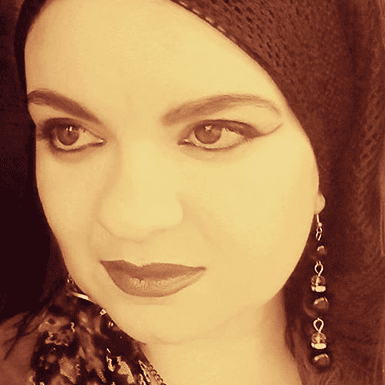When a last request turns into a journey, Palestine becomes tangible. Rabai Al-Madhoun’s novel, Fractured Destinies (Hoopoe Fiction, 2018), weaves narrations of love, exile and loss, while edging continuously closer to understanding memory departing from choices that might have turned out differently without British and Zionist collusion to colonise Palestine.
Ivana, a Palestinian-Armenian woman from Acre who eloped with a young British medical officer and fled Palestine in 1948, asks her daughter, Julie, to grant her last wish of returning her ashes to her home town. Death and exile mingle to the point that one is indistinguishable from the other, while at the same time defying the local aftermath of her earlier departure which is described thus: “She became a mirage that visited the square on occasions to remind them of the scandal, a wind that blew somewhere else whose sound no one heard.”
Juxtaposed against exile, return and its implications intertwine in the novel. Having discovered her roots, Julie suggests to her husband Walid that they sell their house in London and return to live in Acre. The suggestion is a prelude to hindsight and unravels different memory strands, each showing how the characters grapple with their history and their narratives. Through observation, tradition, political ramifications and resilience, the book unfolds against a backdrop of different characters who complement Julie and Walid, while also struggling to define themselves in the context of their own histories and stories.
Moment of Truth: Tackling Israel-Palestine’s Toughest Questions
Anecdotes and memories also contend with the altered landscape. Reminders of Israel’s colonial expansion are scattered throughout the book, as Walid observes, “Behind me was some ground stripped of its features by American Caterpillar trucks.” In Al-Majdal, Walid recalls his mother and her recollections of historic Palestine which are tied to her experiences, while he comes to terms with the fact that his mother’s descriptions have been razed into “barren land” by Israeli demolitions. One cannot help but recall the myths upon which Palestine was colonised and realise how the author has applied the Zionist myth to the colonised reality.
For Walid, rediscovering Palestine within the colonised parameters takes place on two different levels. His memory fortifies perceptions of the discrepancies between the purported democracy spouted by settlers and the incessant restrictions faced by Palestinians daily. On the other hand, he is also reading the draft of a novel written by his relative Jinin, who lives in Jaffa. The novel is based upon the character of Jinin’s father, Mahmoud Dahman, nicknamed “The Remainer”. A character both despised and admired, The Remainer urged villagers to stay in their villages in the face of Zionist paramilitary gangs. Eventually he, along with other relatives, was displaced. However, The Remainer returned to colonised Palestine, becoming a symbol of resilience among the villagers who viewed his choices first with shame, due to bearing Israeli citizenship, and later with pride as Dahman’s family became a symbol of Palestinian presence.
Jinin’s character hovers between fiction and reality. It is later, at the end of the novel, that the author reveals how she amalgamated imagination and reality both in terms of her novel, as well as to come to terms with her realities. Through Jinin, the definition of people according to their particular attachments to Palestinian cities, towns and villages becomes an important theme in the book. Love exists as a pure emotion that is constantly navigating barriers but never disappears. Each character is coming to terms with Palestinian identity, as well as how to communicate that identity in interpersonal relationships. Flashbacks of past decisions are narrated in detail and the reader is enticed to ponder the specific recollections of past dialogue imparted by the characters. Palestine’s abundance is contrasted sharply against settlement encroachment and settler presence.
An Oral History of the Palestinian Nakba
Settler presence is evoked in the novel’s depiction of Deir Yassin. A settler woman speaks of equality but refuses to acknowledge the massacre, reflecting Israel’s stance on enforced oblivion. It is only through a Palestinian woman, Widad, whose relatives were killed in Deir Yassin, that the horrors of the massacre are made tangible to the reader. Al-Madhoun exhibits literary skill in shifting between narratives, exposing Zionist detachment despite involvement in the colonial massacre, and the spontaneous, heart-breaking reaction of Widad, whose only link to her relatives consists of narrated memories and names inscribed upon memorials.
Ivana’s request, which is fulfilled by her daughter, serves as the catalyst for connections with Palestinian land and people. Julie’s experience of Palestine is new, so the reader can sense that she is relating to Palestine in a different manner from the others. Yet, fulfilling her mother’s last wish has pushed Palestine to the fore. She joins the others in sharing a connection, but her experience of Palestine takes place in a different dimension due to her relatives disowning her mother so many years ago.
For the other protagonists, especially Walid, remembering Palestine evokes contrasts between memory and the present. Rupture is present permanently; the knowledge of being in Palestine and experiencing a colonial landscape sears throughout. As Walid remarks towards the end of the book, “I didn’t find the Jerusalem I’d dreamed of visiting all my life. Just modern buildings scattered all over the place – the sort of thing you could see in any European town, as if we were not in Jerusalem at all. As if Jerusalem was somewhere else.”









